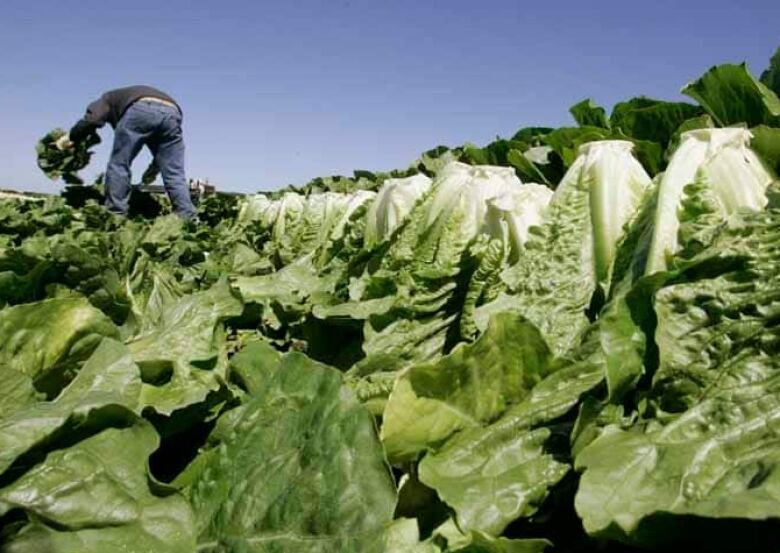Fresh vegetable prices rising, with B.C. leading country
Vegetable prices are rising faster than meat, up nearly 12 per cent across Canada last year

Behold the humble celery: so often slathered with Cheez Whiz or chopped into tuna salad, so seldom revered on its own.
Yet last year, the price of a kilo of crispy stalks went up a whopping 19 per cent, according to Statistics Canada, the highest year-over-year increase in the basket of retail food prices tracked by the agency.
Celery's ascent is the tip of a larger trend.Fresh vegetable prices rose 11.5 per cent across Canada last year much faster than meat, which increased 4.4 per cent.
B.C. led the pack for veggie price hikes, up nearly 15 per cent in the past year and 2.7 per cent last month alone.
Fresh vegetable price increases, by province
Blame the loonie for the lettuce
The lead author of an annual Canadian food price forecast isn't sure what's so special about celery, but says the cause of the overall vegetable trend is clear.
"This is a currency-driven story, really," said Prof. Sylvain Charlebois of the University of Guelph. "These products are highly vulnerable to currency fluctuations."
- Canadian dollar slides as oil sinks below $43 US a barrel
- Inflation cools as food prices soar
- California drought to squeeze produce prices
About 80 per cent of the fruits and vegetables we eat are imported, he said a contrast to meat products like beef and pork, where Canada produces enough to feed ourselves.

"We do import some meat products, but generally speaking Canada is sovereign as a meat market," said Charlebois.
With perishable produce and a changing loonie, that can mean rapid changes.
Lettuce went up 8.5 per cent in one month, from August to September of this year, Charlebois noted.
"That has something to do with imports and the currency, for sure."
UBC food and resource economist Richard Barichello agreed that the exchange rate was the driving factor in vegetable prices, saying it's boosted the import cost by more than 10 per cent.
California drought a factor, too
Four years of drought in California havecausedfew price changesforU.S. consumers, but the drought has affected the supply of fresh vegetables that Canadian importers have relied on, said Charlebois.
"California does supply a lot of organic products into Canada," he said.
It's the major source of imported lettuce, broccoli, cauliflower andcarrots, among other crops.
While not as big of a price driver as the exchange rate, it still is forcing grocers to look elsewhere at higher prices, he said.












_(720p).jpg)


 OFFICIAL HD MUSIC VIDEO.jpg)
.jpg)



























































































